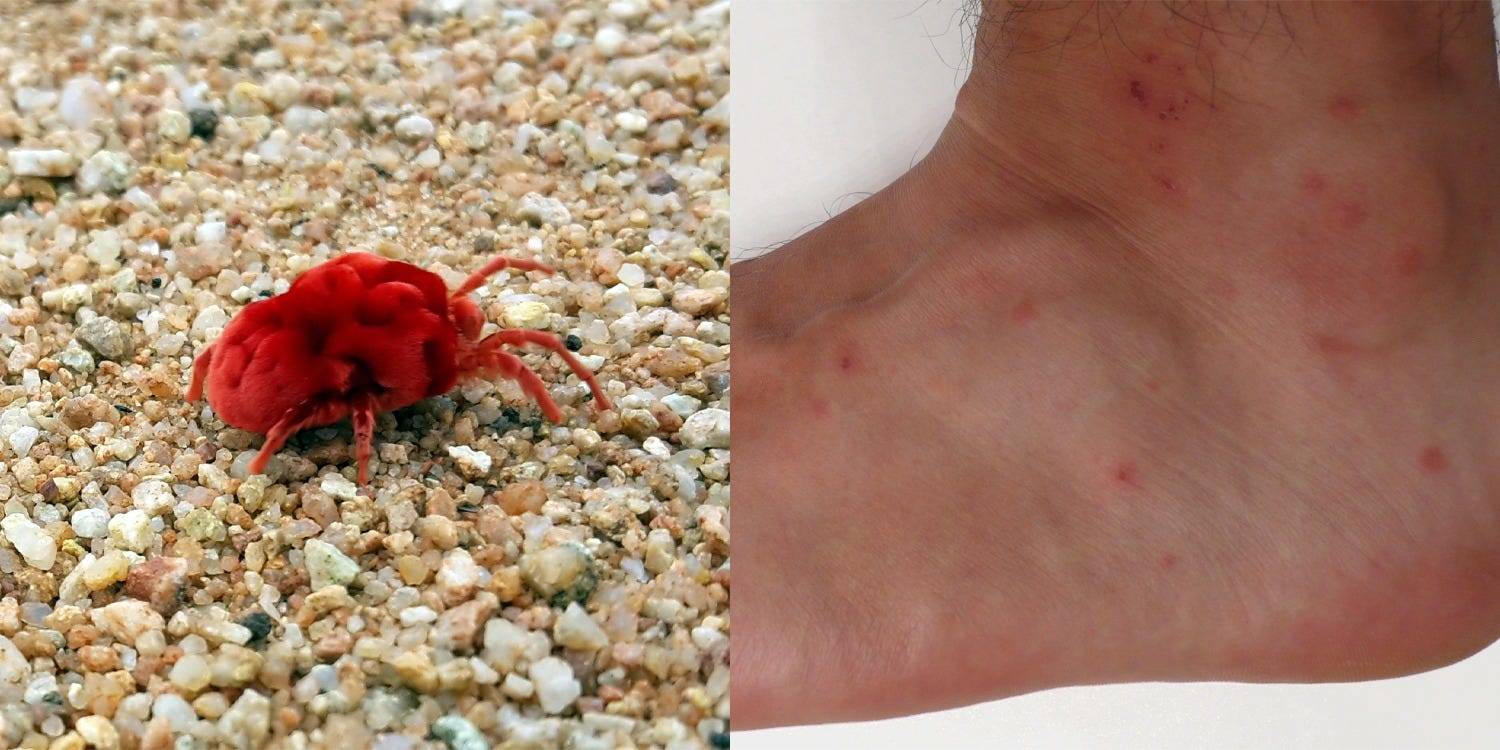A lot of confusion has arisen in the minds of people from time to time. While many people think that chiggers and bed bugs are the same entity, many others want to research further and delve deeper into the matter to get more clarity. In this article, we’ll try to list all the important points of chiggers vs bed bugs.
Chiggers are larva stages of mites with six legs. They are so tiny that it becomes difficult to notice them with the naked eye. These feed on the blood of humans and are hairy and bright red in color. Their bites are very irritable. These live in grassy areas near the soil. They multiply with heat and humidity and die in colder places.
Bed bugs are reddish brown and tiny but you can see them with the naked eye. Their bites cause rashes and infection and they feed on humans at night. Their abode is under mattresses, old furniture, boards, etc. They appear due to zero exposure to direct sunlight.
We decided to provide the available information and give you a clear picture of chiggers vs bed bugs. We are sure that this information will come in handy for you and your quest.
Battling the Bites: Distinguishing Chiggers from Bed Bugs and How to Deal with Them

Chigger bites are often found around the ankles, waist, and other areas where clothing is tight. The bites cause intense itching and may appear as red, raised bumps, or blisters. Chiggers do not transmit diseases to humans.
Bed bug bites, in contrast, are typically found in clusters or rows on the skin. These bites may also cause itching, redness, and swelling. Unlike chiggers, bed bugs are known to transmit diseases, though it is relatively rare.
Chiggers and Bed Bugs: A Close Look at Two Troublesome Pests
Chiggers are the larvae of mites belonging to the Trombiculidae family. They are usually active from spring to fall and can be found in various outdoor environments, such as grassy fields, forests, and parks.
Bed bugs are members of the Cimicidae family and can be found all over the world. They are most active at night, feeding on their hosts while they sleep. Bed bugs are notoriously difficult to eliminate due to their resilience and adaptability.
Understanding Chiggers and Bed Bugs: Symptoms, Solutions, and Strategies
To prevent chigger infestations, avoid walking through tall grass and wooded areas during the chigger season. Wear long pants and use insect repellent containing DEET or permethrin. If you suspect a chigger bite, wash the affected area with soap and water, and apply over-the-counter anti-itch creams.
To prevent bed bug infestations, inspect your living spaces regularly, especially after traveling. Use mattress and box spring encasements, and vacuum your home frequently. If you suspect a bed bug infestation, contact a professional exterminator for assistance.
Chigger and Bed Bug Infestations: The Key Differences and How to Address Them
To effectively address chigger and bed bug infestations, you must first recognize their key differences. While chiggers are primarily an outdoor nuisance, bed bugs infest indoor spaces. Chigger infestations can be managed by avoiding their habitats and using appropriate repellents. Bed bug infestations, however, often require professional extermination and rigorous cleaning efforts.

Combatting Creepy Crawlers: A Guide to Chiggers and Bed Bugs in Your Home
Preventing and treating chigger and bed bug infestations in your home is essential for maintaining a comfortable living environment. For chiggers, ensure that your yard is well-maintained, with trimmed grass and minimal leaf litter. For bed bugs, invest in high-quality mattress covers, and inspect your home regularly for signs of infestation.
Bugging Out: How to Tell if You’re Dealing with Chiggers or Bed Bugs
If you’re experiencing itchy bites, it’s crucial to determine whether they’re from chiggers or bed bugs. Examine the location and appearance of the bites, as well as any patterns in their occurrence. Chigger bites are often found around tight clothing areas, while bed bug bites typically appear in clusters or rows.
Conclusion
On the surface, it might seem that Chiggers and Bed Bugs have a great deal in common. The reality is that other than causing painful and itching areas on your skin, they are very different. This article will compare Chiggers vs Bed Bugs and provide you with all the information you need to know to tell the two apart, including distinguishing Chigger Bites vs Bed Bug Bites. It will also give you clarity on the chiggers and bed bugs difference so that you can take an informed decision if you ever fall victim to the same.
FAQs
Q: What are chiggers?
A: Chiggers are the larvae of Trombiculid mites that are parasitic in nature and feed on the blood of animals, including humans. They are commonly found in grassy or wooded areas and can attach themselves to the skin of their host when they come into contact with the larvae.
Q: What are bed bugs?
A: Bed bugs are small, reddish-brown insects that feed exclusively on the blood of humans. They are usually found in human dwellings, such as homes and hotels, and can hide in cracks and crevices in furniture, walls, and floors.
Q: What are the symptoms of chigger bites?
A: The symptoms of chigger bites include intense itching, red bumps or welts on the skin, and hair loss. The bites may also be grouped in clusters or lines.
Q: What are the symptoms of bed bug bites?
A: The symptoms of bed bug bites include red, itchy welts or bumps on the skin that may have a darker red spot in the center. They may also be grouped in a line or cluster.
Q: How do you prevent chigger bites?
A: To prevent chigger bites, you should avoid walking in grassy or wooded areas, wear long sleeves and pants when outdoors, and use insect repellent on exposed skin.
Also, Read –

